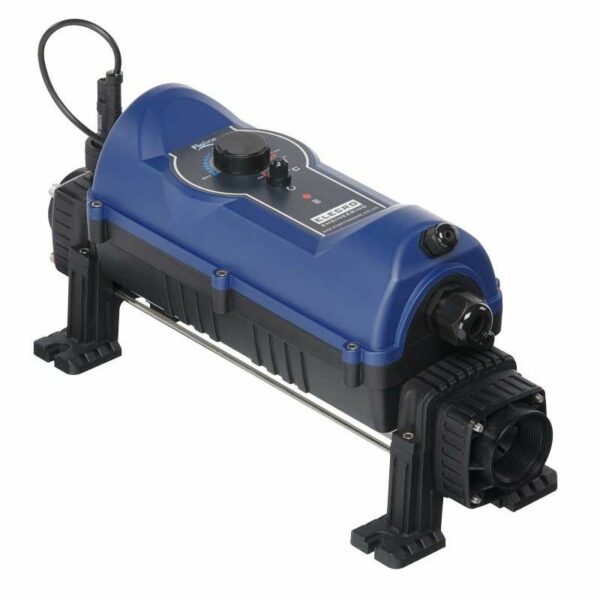
Test drive Mini Clubman
In anticipation of the presentation of the new Clubman, I leaf through the book Maximum Mini by Geron Bouige - an encyclopedia of models based on the British compact. There are sports cars, coupes, beach buggies, station wagons. But there is not a single car with rear passenger doors. There were none on serial machines, with the exception of one single prototype that did not survive. The new Mini breaks this tradition, but in some ways they are closer to the same car from the 1960s.
It all started with the previous generation Clubman, which was timidly fitted with a tiny sash. The new car has a complete set of rear passenger doors. They say that the last "Clubman" was most dissatisfied in the homeland of the model - in the UK. The fact is that the Clubdoor sash did not open at all towards the club, but directly onto the roadway - adapting the body to left-hand traffic would require additional costs.
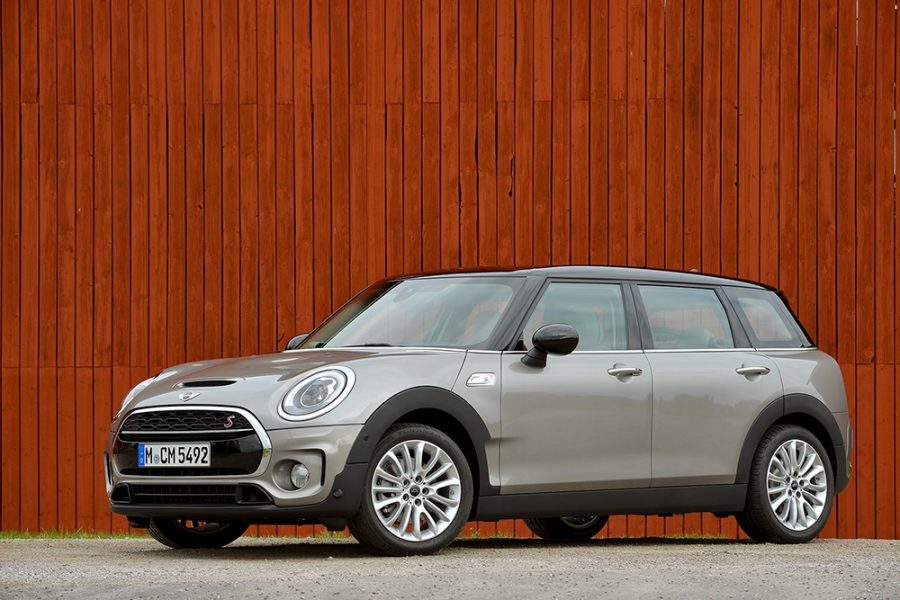
Now the passenger can get to the second row through wide openings on either side and sit in the back with much more comfort, because the car has grown a lot in size. It is more than 11 centimeters wider than the previous Clubman and 7 centimeters larger than the new Mini five-door. The increase in the wheelbase was 12 and 10 cm, respectively. The new Clubman is the largest car in the lineup, a full-fledged C-class. But you can't say it in appearance: the car seems very compact, and the additional struts have harmonized the profile and now, unlike the station wagon of the previous generation, it does not resemble a dachshund.
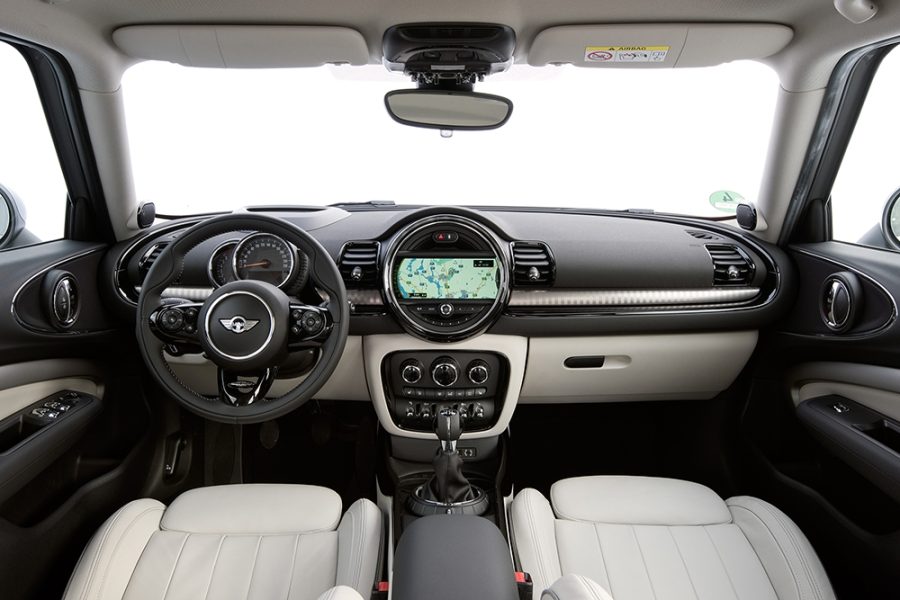
The radically changed Clubman has retained the family trait of Mini station wagons - a double-leaf tailgate. Moreover, now the doors can be opened remotely not only with a key, but also with two light "kicks" under the rear bumper. It is impossible to violate the order of closing the doors: first the left one, which snaps into the bracket in the luggage opening, then the right one. There is protection against confusing left and right: a soft rubber cover is put on the protruding lock of the left door. The family two-leaf design is not only part of the style, but also quite a convenient solution. It is also more compact than a conventional lift door. But the British had to tinker with the doors: each glass needs to be supplied with heating and a "janitor". And for fear that the horizontal lights would not be visible with the doors open, additional light sections had to be placed on the bumper, due to which the rear of the car turned out to be overloaded with parts.
The Clubman offers the Mini's maximum boot volume of 360 liters, including deep pockets in the doors and sidewalls, as well as a fairly roomy hutch for golf-class hatchbacks. There is no spare wheel space on the Mini equipped with Runflat tires. A little extra space can be gained by placing the back of the rear sofa upright and securing it with special latches. The backrest can be in two or three parts, and when folded completely, you get over a thousand liters of luggage space.
The compass is still the most favorite tool of interior designers, but in the new Clubman they abused the clumsy large details less: the lines are thinner, the drawing is more sophisticated. The “saucer” in the center of the front panel was retained out of habit - it only has a multimedia system, and the speedometer has long and firmly moved behind the wheel, to the tachometer. When setting up, the devices swing along with the steering column and will definitely not fall out of sight. But on the dials, slightly larger than those of a motorcycle, you can’t display a lot of information - the glass of the projection display helps out. It is much more convenient to read data from it.
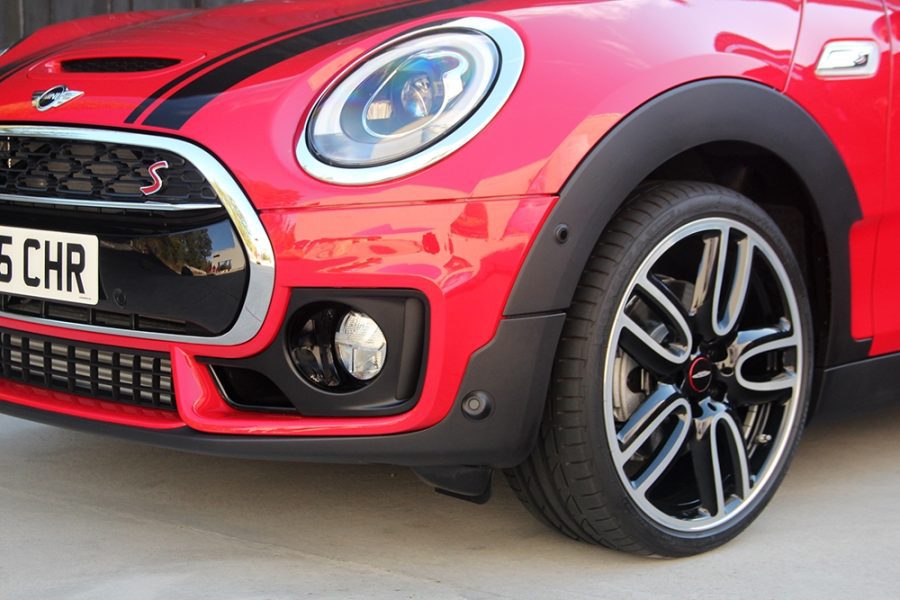
The Cooper S version can be easily distinguished from the usual Clubmen by the “nostril” on the bonnet and the characteristic sports bumpers. In addition, the car can be distinguished with the John Cooper Works styling package with a different body kit and rims.
The car is constantly flashing lights like a Christmas tree. Here the sensor has sensed the movement of the leg, and the Mini is actively flashing its hypno-lights, as if warning: "Caution, the doors are opening." Here the border of the "saucer" of the multimedia system lights up in red. Even at the tip of the fin antenna there is a special light indicating that the car is set to an alarm.
The body of the new "Clubman" was designed from scratch and, in comparison with the five-door, it became tougher. In front between the pillars and behind under the bottom, it is connected by stretch marks, a wide central tunnel passes between the seats, and behind the rear seats there is a massive power beam.
The slot in the hood is deaf and is no longer responsible for air intake, but what Cooper S is without a nostril? And the air ducts in the "gills" and behind the wheels in the style of BMW are quite functional - they improve aerodynamics.
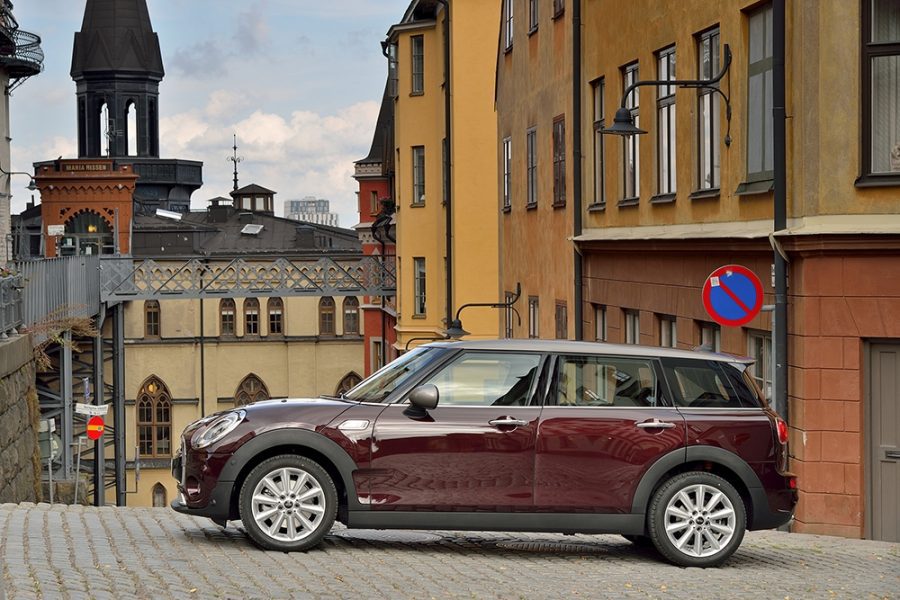
The Cooper S version can be easily distinguished from the usual Clubmen by the “nostril” on the bonnet and the characteristic sports bumpers. In addition, the car can be distinguished with the John Cooper Works styling package with a different body kit and rims.
The engine produces the same as in the usual five-door Cooper S, 190 "horses", and its peak torque can briefly increase from 280 to 300 Newton meters. In this case, the power unit has to move an additional hundred kilograms in space. Consequently, in dynamics, the Clubman Cooper S is inferior to a lighter and more compact congener. The Clubman has its own steering and suspension settings. According to Peter Herold, specialist in driving dynamics and integration of driver assistance systems, in the new car, they decided to combine the sharpness of control with a suspension that is comfortable on long trips. Indeed, the steering response is immediate, but even in Sport mode, the chassis does not tend to be rigid.
The main pair and gear ratios of the first two stages of the "mechanics" here are the same as in conventional Cooper S, and the rest of the gears have been made longer. The station wagon takes off provocatively, the engine hums loudly in sport mode, but still the acceleration does not look so bright. But in the city crowd, long passes are more convenient. However, in the management of the "mechanics" is not without sin: instead of the first when starting off, it is easy to turn on the reverse, and the second gear now and then has to be groped for. Much more convenient is the new 8-speed "automatic" - the prerogative of powerful versions. With him, the car is faster, albeit by a tenth of a second. In addition, this version has a higher load on the front wheels, and the springs are stiffer, which is why it is controlled much better.
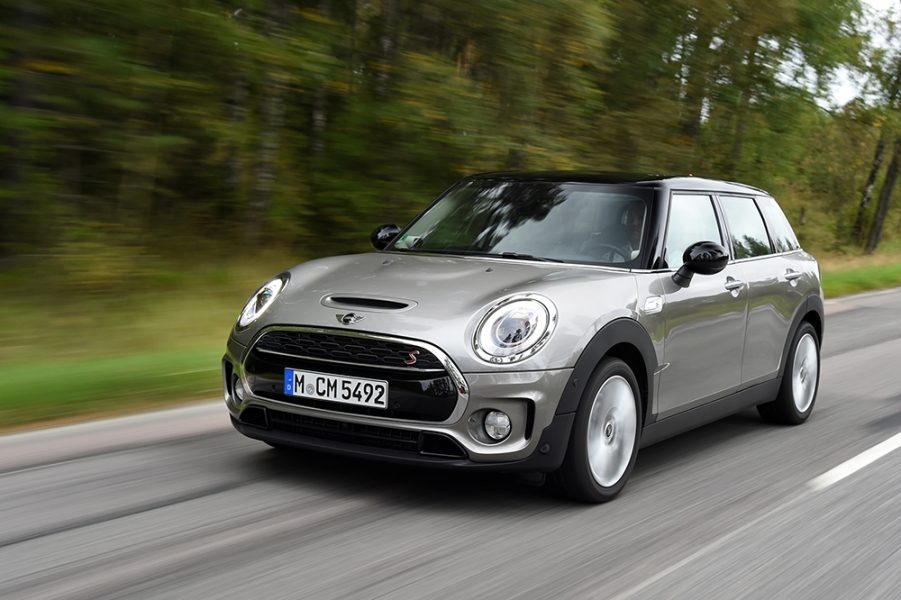
"Have you filled the aquarium with the fish?" - asked us a pretty colleague after the test drive. It turned out that in the depths of the menu of the multimedia system there is a fish in the aquarium: the more economical the driver goes, the more virtual water. It is strange that an animated carrot or some other vegetable was not made the hero of this ecological game. But this is not a diesel One D Clubman, but the most powerful in the Cooper S Clubman line. And he should not please the fish, but the driver. And not with eco-friendly behavior, but with a go-kart feeling.
But the furious hard cards are a thing of the past. The suspension of the current generation Mini has been sought to be made more comfortable, and the new Clubman is another big step in that direction. However, the representatives of the company do not hide the fact that the new car is intended for a different audience.
“That generation of creative people that we made the previous Clubman for has grown. They have other requests and they tell us: “Hey, I have a family, children and I need additional doors,” says Head of Communications for Mini and BMW Motorrad, Markus Sageman.
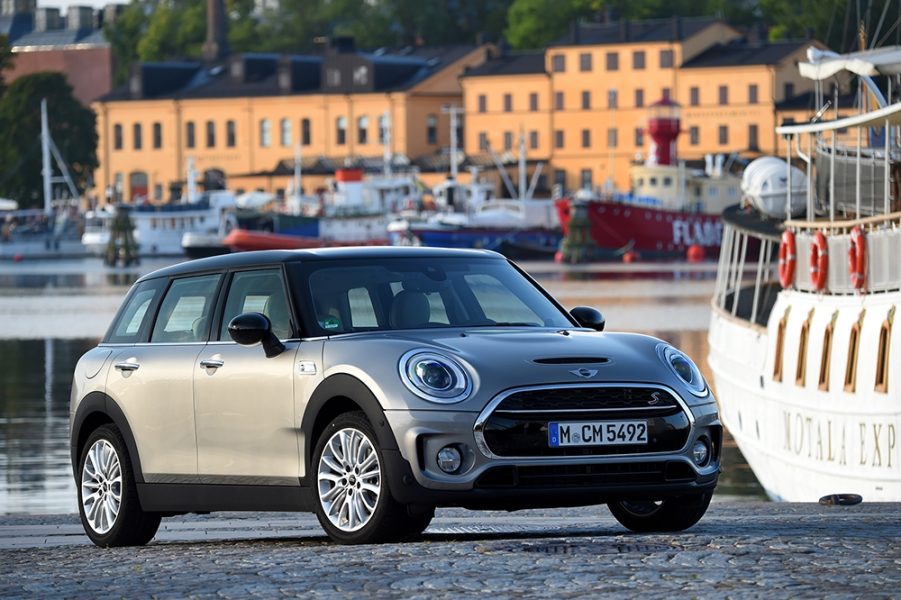
In keeping with requests, the new Clubman looks solid, and its chrome-bezel lights, despite the hypnotic design, would be more Bentley than Mini. And the sports seats are now electrically adjustable.
Of course, fans of the brand will continue to give preference to the hatchback, but there are also purists who consider the additional pair of doors not in line with the spirit of the Mini. Maybe it is so, but do not forget that the iconic British car was conceived as practical and roomy, despite its modest dimensions. This is exactly what Clubman is.
The three-door is, as a rule, the second car in the family, and the Clubman, due to its versatility, may become the only one. In addition, the Mini engineers let slip that they are going to make the car all-wheel drive in the future. This is a good application for the Russian market, where the Countryman crossover is in great demand, and the Clubman has always been exotic like convertibles or Mini roadsters. In Russia, the car will appear in February and will be offered exclusively in Cooper and Cooper S versions.
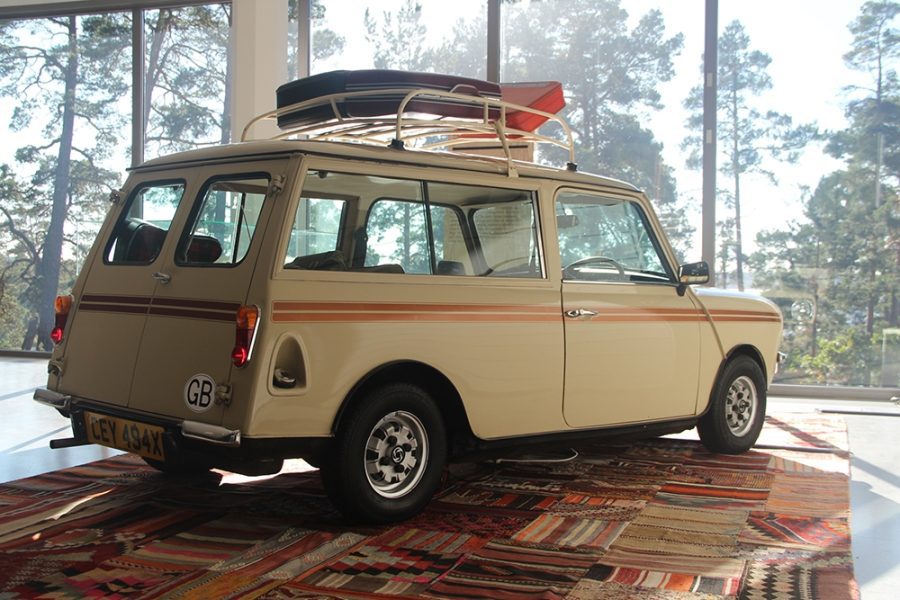
The first Mini-based station wagons, the Morris Mini Traveler and Austin Mini Countryman, with old-fashioned, wood-slatted bodies, were introduced in the early 1960s. The Clubman name was originally borne by the more expensive restyled version of the Mini, introduced in 1969 and produced in parallel with the classic model. On its basis, the Clubman Estate station wagon with hinged rear doors was also produced, which is considered the forerunner of the current Clubmen. The Clubman model was revived in 2007 - it was a station wagon with hinged doors and an additional door for the convenience of rear passengers.
Evgeny Bagdasarov

